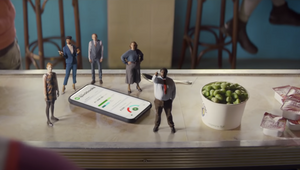
The Growing Importance of Sound

In 1922, from the WEAF radio station in New York City, a simple radio commercial was broadcast. It was commissioned by the Hawthorne Court Apartments in Jackson Heights. “Friend, you owe it to yourself and your family to leave the congested city and enjoy what nature intended you to enjoy” says an unidentified, golden age of radio voice. “Visit our new apartment homes in Hawthorne Court, Jackson Heights, where you may enjoy community life in a friendly environment.” As insignificant as that message may have been to many listeners tuning in that morning, its significance to radio was huge. Behind it was the birth of commercial radio - the first radio advertisement. Hawthorne Court Apartments paid $50 for 10 minutes of airtime.
Today the process of paying for an audio advertisement is similar at its core, but the mediums, audience reach and techniques have drastically changed. Its nature is constantly in flux and with every new generation, old rules need to be thrown out or reconsidered. As a music supervisor in the advertising world, the majority of our work is in creating and finding music to accompany moving image for TV or online commercials, but more and more we’re seeing that their first cousin, the audible advertisement is becoming more and more important. But what is changing?
In 2020, 3.3 billion people will own a smartphone, that's almost half the world's population. The adoption of smartphones has unbundled two main types of audio content traditionally found on terrestrial radio. The first is music consumption, which is rapidly moving to music streaming services like Spotify, Pandora, Deezer or Mixcloud. The more you use them, the better they understand your taste and you can discover new music, easily build playlists and get access to millions of tracks from all over the world, from bedroom producers to Beyonce. So it’s no wonder that revenue models have latched on to this growth, accounting for almost half of global revenue in the music industry. It accounted for less than 5% of revenue five years ago.
The second change is in talk radio, which is swiftly being replaced by podcasts. The growth of podcast use is unprecedented. There are currently 700,000 podcasts available for streaming compared to 550,000 only last year. They cover news, comedy, sports, culture, business, philosophy, mindfulness - any topic you can think of, you can be sure somebody somewhere is taking smack about it into an omnidirectional mic. The versatility of the podcast via smartphone means you can listen while commuting, at the gym, at home, on walks, before bed, in the shower, basically anywhere a human is in danger of having original thoughts, the podcast is there to save you. That means the amount of time people spend listening is considerably more than any previous medium. Coupled with the fact that there is rich data on users from demographics, to location, to time spent listening - means it makes for unquestionably fertile ground for advertisers.
But there is another key factor to this comeback of sound. The rise of smart speakers, connected cars, and “hearable” devices like AirPods will continue to drive the growth of audio. Instead of pulling out a phone or opening a laptop, more and more people are turning to their AI assistant to source information. Alexa, Siri, Google, Cortana and the rest of their friends are literally getting smarter by the second. As the search for information transfers from our eyes to our ears, the importance of brands being heard is critical to their survival. Visual symbols that help users navigate the world and recognise brands are disappearing as the world becomes more and more voice activated.
So how do brands survive this new landscape? Joel Beckerman, a leader in the field of sonic branding said, “a true sonic identity system is about more than podcast ads and app chimes. It must be concept-driven, research-based and part of a larger system”. Much like visual identities, sonic identities must be made with the same vigour and attention to detail. It’s a process of analysis, research, testing, adoption and execution. This is not a new concept, sonic identities have been around for decades. The Intel sound logo - still one of the most widely recognised worldwide today - was made in 1991, but their increased need and importance for brand survival is growing by the day. It’s an exciting time for creators of sound who can work to help thousands of brands find their voice in an increasingly noisy world.










